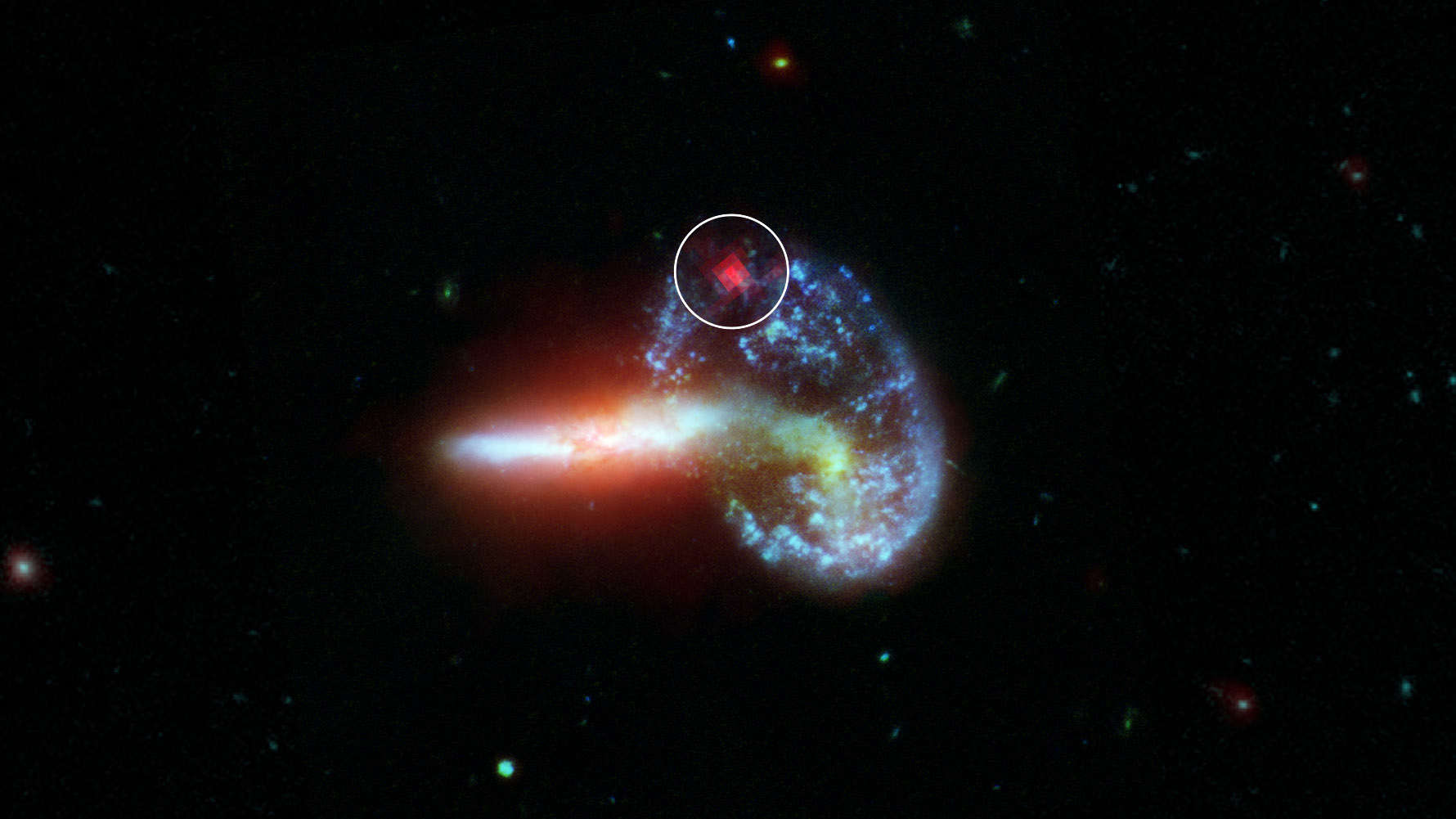We can’t see them, but stars are blowing up all the time

Supernovas sound like they’d be hard to miss. How could a ginormous stellar explosion possibly go unnoticed?
The problem is that despite being spectacles of destruction, many exploding stars are either too distant to be observed, obscured by a dusty galaxy, or in a wavelength we can’t see. Now five previously unknown supernovas that are only visible in the infrared part of the spectrum (whose wavelengths are too long for human eyes to see) have emerged. They could have never been detected by optical light. This is proof of predictions that stars explode all the time.
It was data from NASA’s now-retired Spitzer telescope that told astronomers Ori Fox, of the Space Telescope Science Institute in Baltimore, and Alex Fillipenko, of UC Berkeley, along with their research team, where the supernovas were hiding. They have finally figured out what was causing the inconsistency of fewer supernovae observed in faraway galaxies than those around us. Fox led a study, co-authored by Fillipenko, recently published in Monthly Notices of the Royal Astronomical Society.
“Light with longer wavelengths, like infrared, doesn’t get scattered or absorbed by dust as much as blue light does,” Fox told SYFY WIRE. “The infrared light gets through, and the rest of the light gets dispersed in the far away galaxy; it's just too scattered for us to see it.”
It’s kind of like when Wandavision’s astrophysicist Darcy Lewis realized she could only see through the Hex at the right frequency. The “supernova discrepancy”, or the inconsistency between the number of supernovas thought to be going off in the universe and how many are actually observed by optical telescopes, like Hubble. This isn’t such a problem in nearby cosmic territory. Unfortunately, the further out you get, the smaller objects appear, and the further back in time you’re seeing. If the light from a supernova 13 billion light years away just reaches Earth, that means it is appearing to us as it was near the dawn of the universe.
Then there is all that dust that scientists have to contend with. The further out a telescope tries to view a supernova, the more dust it has to proverbially squint through. This again has to do with how far back in time it is viewing that object, since galaxies emerge from gargantuan discs of dust and gas. Dust absorbs optical light, which is only going to see a blur of a galaxy, but that changes when viewing that same galaxy in the infrared.
“Infrared light has longer wavelengths than optical light, making it easier for infrared light to bend around dust particles,” Fillipenko also told SYFY WIRE. “Radio waves do this even more easily, with their even longer wavelengths.”
After trying to make out supernovas in 40 dusty galaxies, the astronomers found five that had never been detected before, and all of them were core-collapse or Type II supernovas. When old stars at least ten times more massive than the Sun take their dying gasps, they have reached a point where nuclear fusion has turned their cores to iron. They cannot fuse heavier elements, because that would require even more energy which they no longer have. The stars’ cores collapse because they can no longer put out enough energy to support their own gravity.
“With no new source of nuclear energy to keep the core pressurized, gravity takes over and causes it to collapse,” Fillipenko said. “That collapse of the core results in an explosion of the outer layers.”
Stars that go supernova this way often turn into black holes or neutron stars, some of the most powerful and enigmatic objects in the universe. They also seed the universe with heavy metals produced in the extreme pressures and temperatures of the supernova. Core collapse brings on the explosion of the outer layers. When an already collapsing star can no longer take it, it explode and scatters heavy elements, mostly metals, into space. These elements are scattered out in space and could eventually be the stuff of rocky planets forming somewhere.
Having an idea of how many stars are forming can also give an idea as to how many are out there exploding. The only solution to the “supernova discrepancy” was thought to be that the predictions of the number of supernovas out there were right, but they could just not be seen for some reason. Before coming to any conclusions that our entire idea of star formation could be off, Fox, Fillipenko and their team needed to see whether there was a reason we were missing supernovas. There was. We just weren’t seeing them in the right wavelength.
“There should be a relationship between the number of stars forming and number of supernovae that explode,” said Fox. “You want these numbers to match up to each other and at all the different ages of the universe. The problem is that they don't match all the time, so we need to ask whether the problem is.”
Looks like we’re going to need a bigger infrared telescope. In the near future, the James Webb and Nancy Grace Roman telescopes might make out even more dramatic stellar explosions.


























